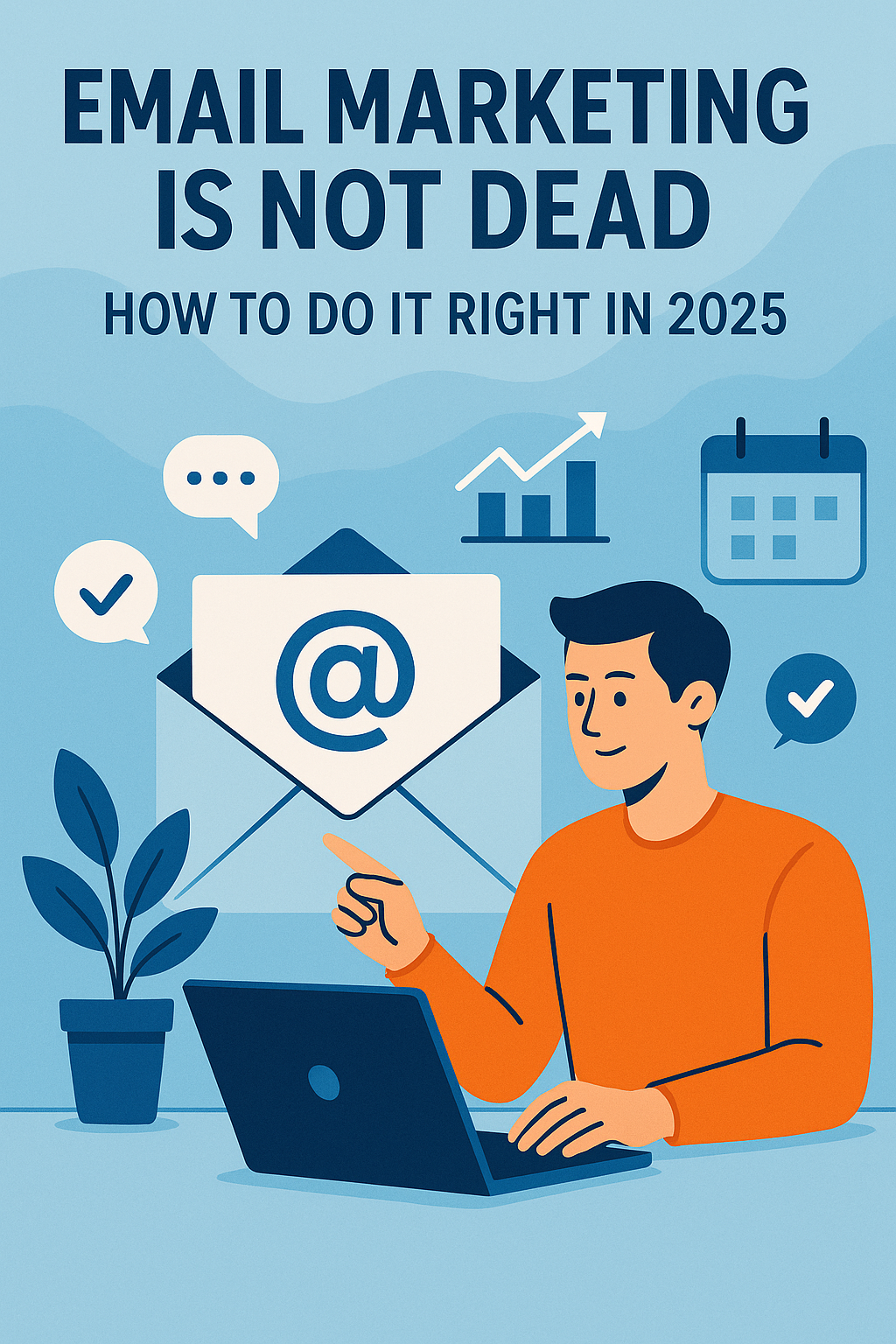Emails are evolving instead of becoming obsolete. And intelligent marketers have learned how to capitalize on them more than ever before.
Email marketing faces competition every year from a new app, algorithm, or platform touted as its “killer.” However, every year, it has been proven that email marketing is not only alive but also essential. As social media continues to gain traction and AI-powered messaging takes over, email will still retain its position as the most direct, owned, and ROI positive channel for communication in 2025.
Do you know why? Email marketing is effective because it directly reaches people’s inboxes, without needing to go through an algorithm, commission, or any third-party service. Additionally, it offers valuable data that companies can leverage to nurture long-lasting relationships with their customers.
But these results are not easy to achieve. Efforts need to be made to craft smarter, more strategically segmented emails designed for contemporary inboxes.
The Numbers Don’t Lie
Email is, and will continue to be, alive and evolving. By the end of 2025 alone, Statista predicts that there will be more than 4.8 billion email users, accounting for over 60% of the world’s population. In addition to that, the volume of emails sent around the world is growing, and is expected to reach 393 billion per day.
Campaign Monitor’s 2024 benchmark report revealed email as the top-performing channel for direct response, with marketers reaping the benefits of automated responses to emails driven by algorithms. Automated algorithms within emails have proven particularly lucrative for marketers, as for every \$1 spent on email marketing, an average of \$36 is generated—and that easily surpasses paid social media and social advertising.
From Blast to Behavior: Personalization Is the New Default
The evolution towards personalization and automation intersect with AI, as “deep learning” AI technologies such as Klaviyo’s Smart Send and Salesforce’s Einstein Engagement Score allow brands to tailor messages based on purchase histories, browsing history, and email activity to optimize user interactions.
Expectations in 2025 place a heavy focus on tailoring communications to adequately reflect user interests and timing, with failure to do so forcing brands to brand themselves as “spam” perpetrators. Emails have transitioned from batch newscasts to behavior-driven, tailored responses capable of reacting to individual circumstances.
Deliverability: The Silent Killer of Campaigns
Email marketing is ineffective if emails aren’t landing directly in the intended inbox. One still overlooked yet critically important aspect of a successful email marketing strategy is deliverability. This is set to change due to Google and Microsoft’s spam controls which they are expected to tighten in 2025.
Spam filters powered by AI, which was recently added to Gmail, requires bulk senders to have a good sender reputation, proper domain authentication (SPF, DKIM, DMARC), and good engagement metrics to avoid the Promotions folder and spam folder.
Opening is one of the important engagement metrics that has to be tracked. In today’s world, open rates are not just an indication of engagement; they heavily influence whether an ISP deems the email as important or not. If a relevant email suffers from low open rates over time, it will eventually lead to low inbox placement.
Mobile-First and Accessibility-Ready
Emails are projected to be opened on mobile phones by more than 72% of users in 2025, according to Litmus. This figure means that responsive design stops being an option and becomes a default requirement. Marketers should start thinking vertically and adjust the text to fit within words, as well as increase the size of CTAs so they can be tapped easily.
But it’s not solely concerning mobile devices; it is about everyone. With inclusivity being prioritized, emails have to think about screen readers, high-contrast modes, and alt text for graphics. Failing to comply with such provisions will add mark brands to the list of users they serve- as well as become a target for disability access laws in EU and US for legal scrutiny.
Accessibility: Less Value, More Noise
Ideal performing emails for the year 2025 do not require excessive balance; rather having a function or purpose that is valuable. This translates to giving value upfront, concise subject lines, and short scannable text. In whichever form it could be: a tip a product recommendation, or even dis essential. Discounts offer and the name of the reader dictates whether engagement or deletion occurs within two seconds of opening.
Interactive emails which have polls, product carousels, and revealing content currently have gaining momentum as efficient ways of increasing user engagement to other sites. Embedded content like click to revel also enhances interactivity.
Less generic and overly formal tones are dead – stting is out; personable branded and conversational captures the focus of the masses in dominating inboxes.
Primary Important Issues: Affirmative Is Currency
Emphasis is laid on permission with GDPR, CCPA, and Canada’s modernized Consumer Privacy Protection Act. Outdated practices such as procuring purchased lists and cold emails pose both legal risk and branding concerns. Marketing based on consent is paving the only clear sure path ahead.
This involves providing easy opt-in features, visible unsubscribe buttons, and clear policies regarding data use. Companies that fail to do this risk fines, reputational damage, and getting blacklisted by the major inbox service providers.
Final thoughts: Email is evolving, not dying
Email is not on the verge of dying in 2025. rather it will be more sophisticated. when Email becomes smarter, the platforms using it become more powerful, the audience using it more discerning, and competition becomes fiercer. But for businesses that change—through personalization, performance, and permission—email will continue to be a marketing tool with the most leverage.
Unlike in the past, volume is not what matters the most. Now, it’s value. And brands that provide it to the Inbox—and do so without boundaries—are the ones that win.

Leave a Reply